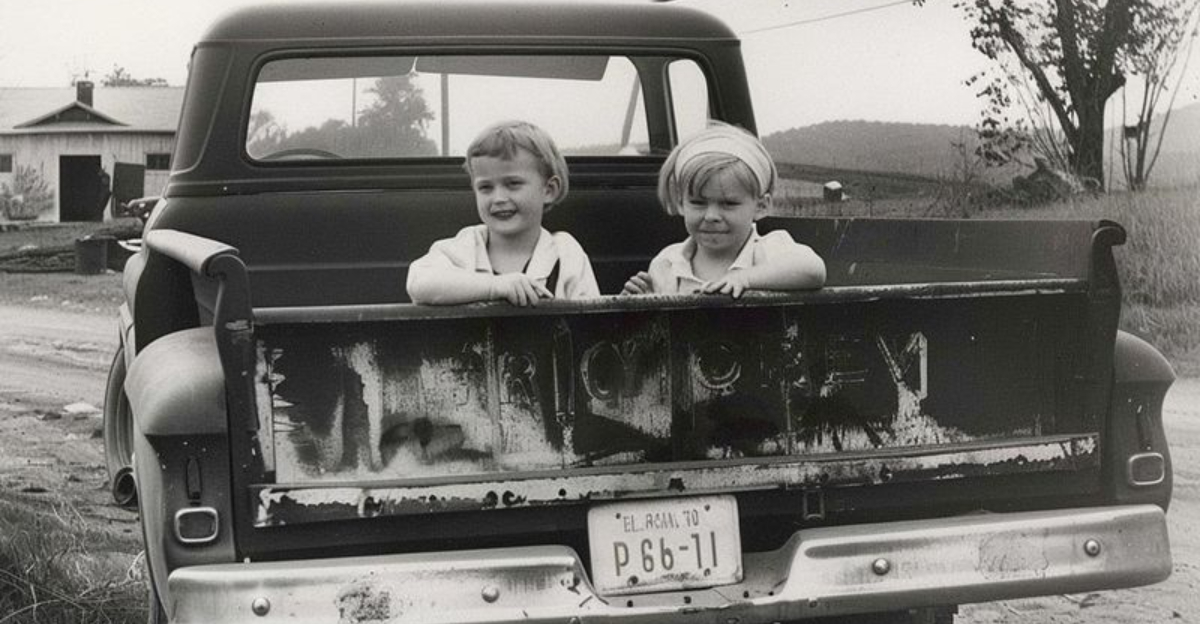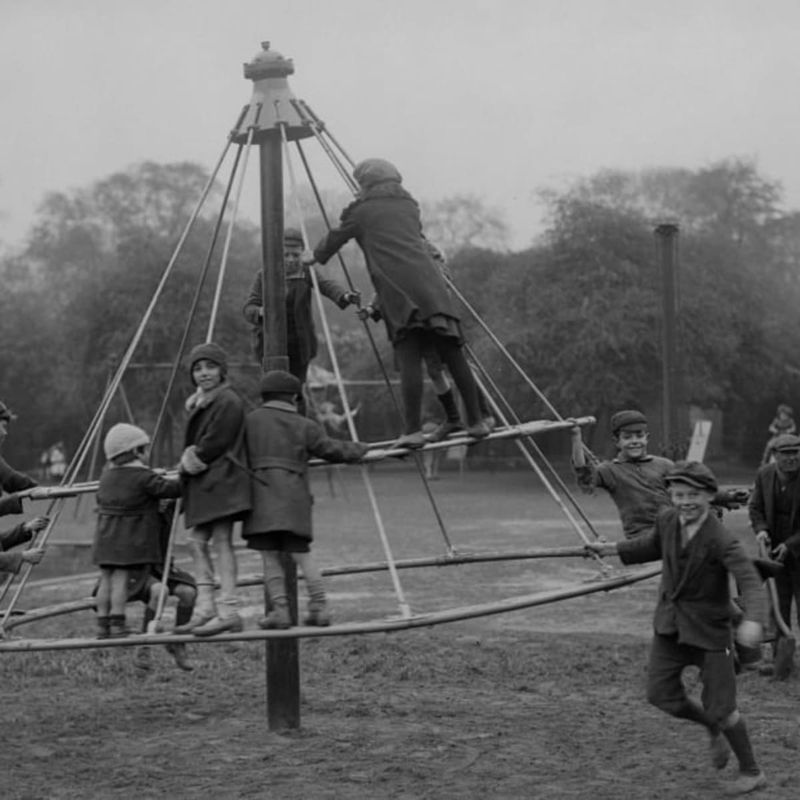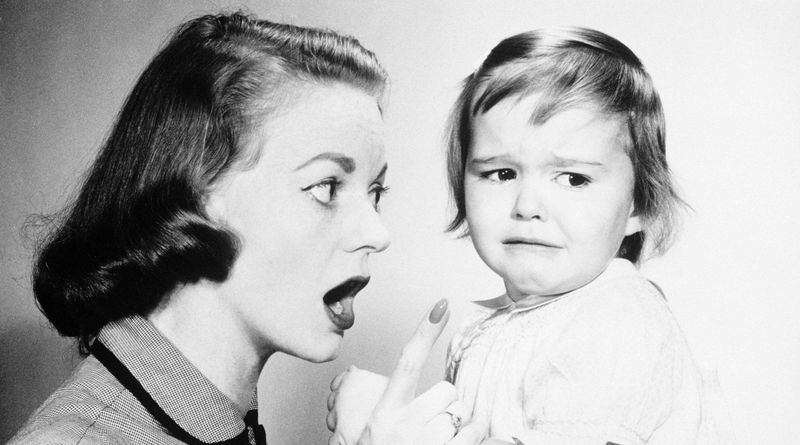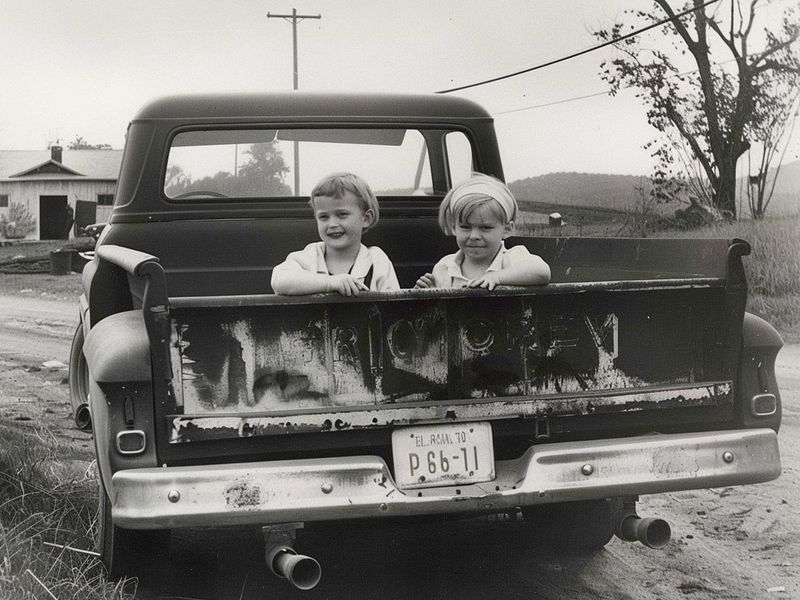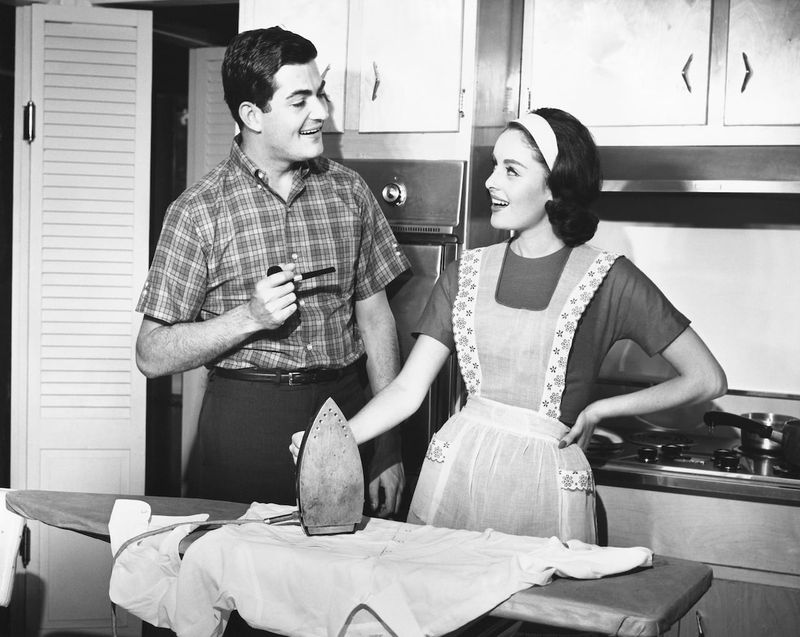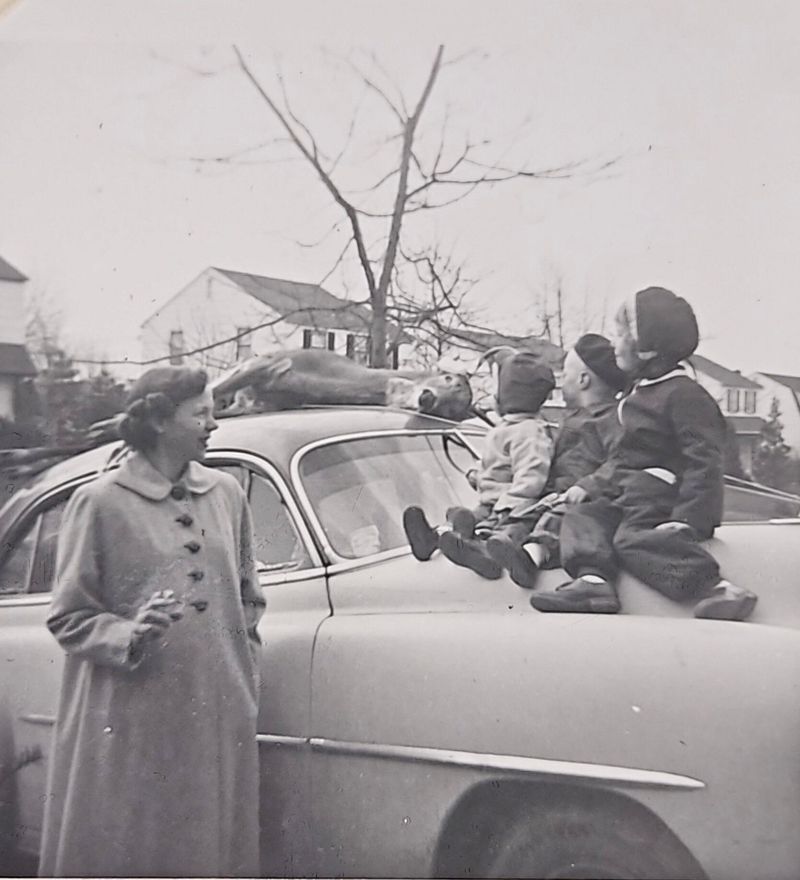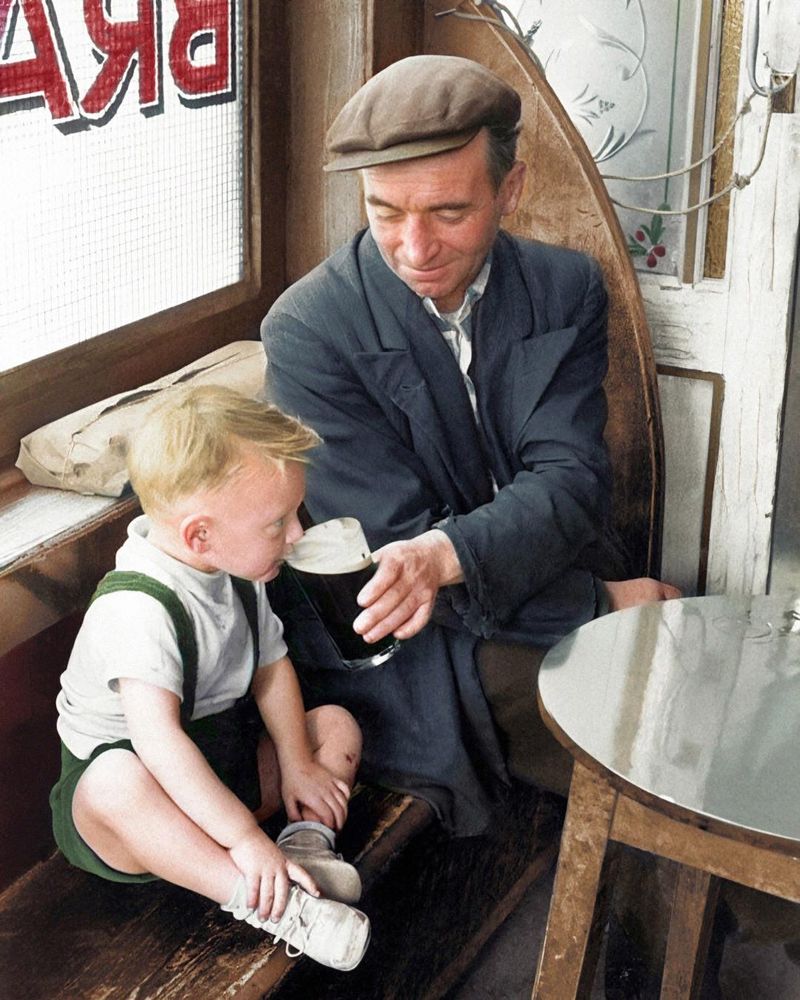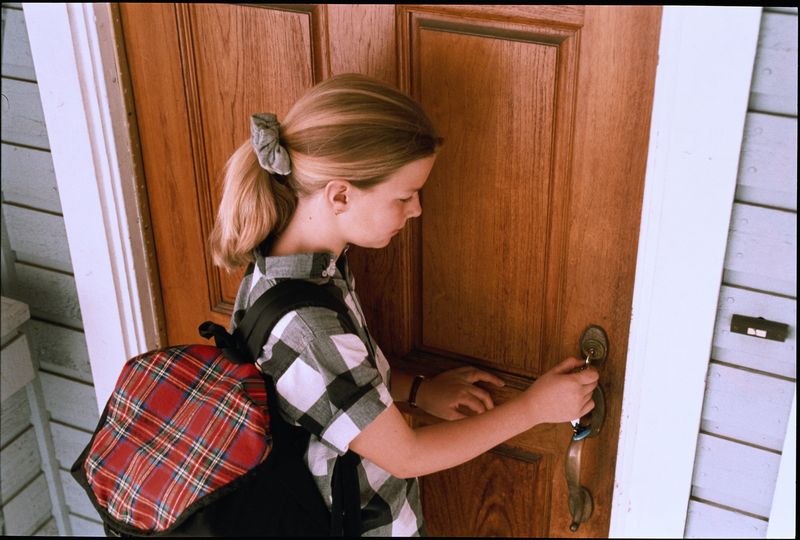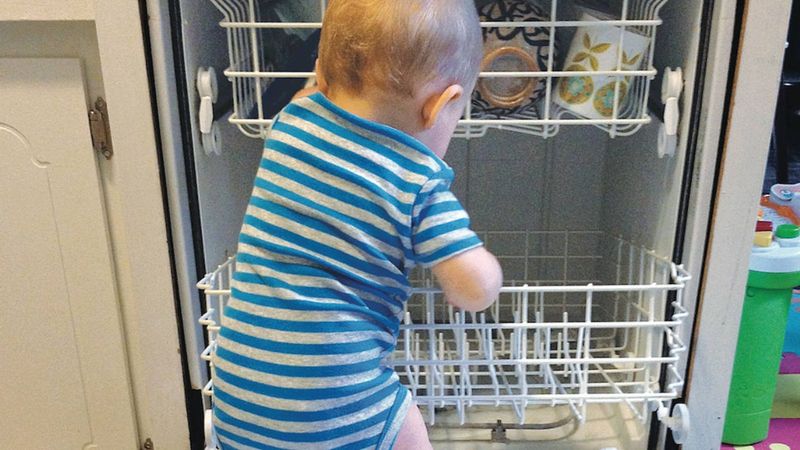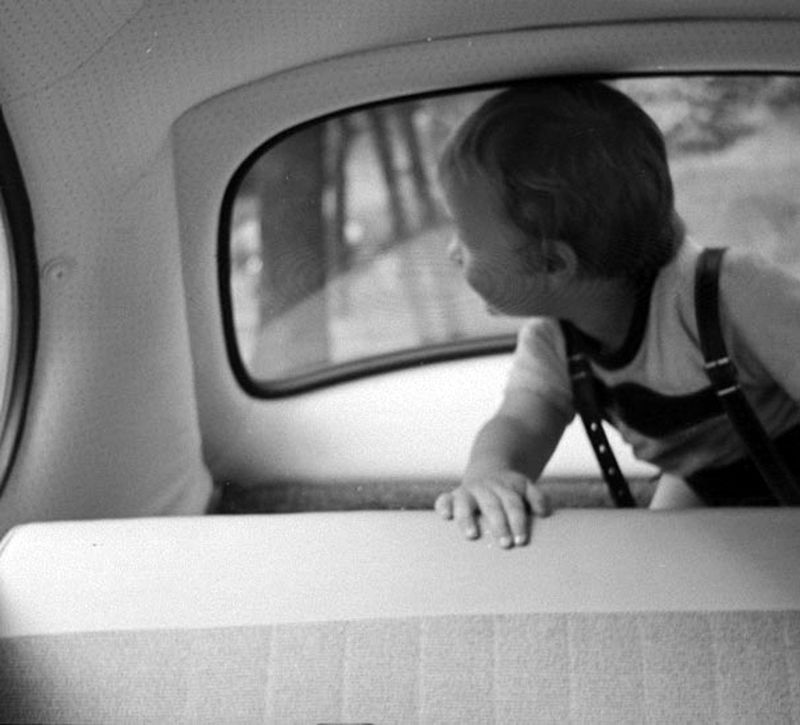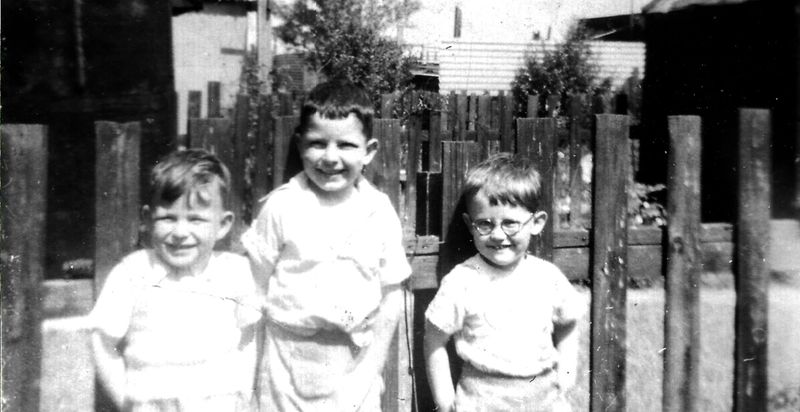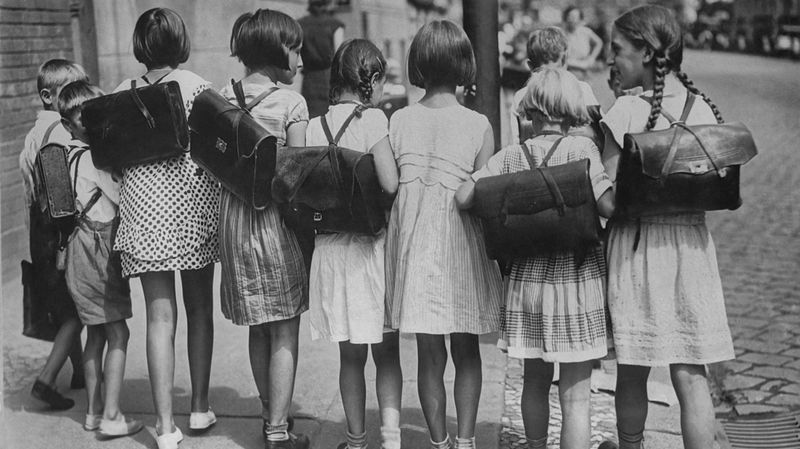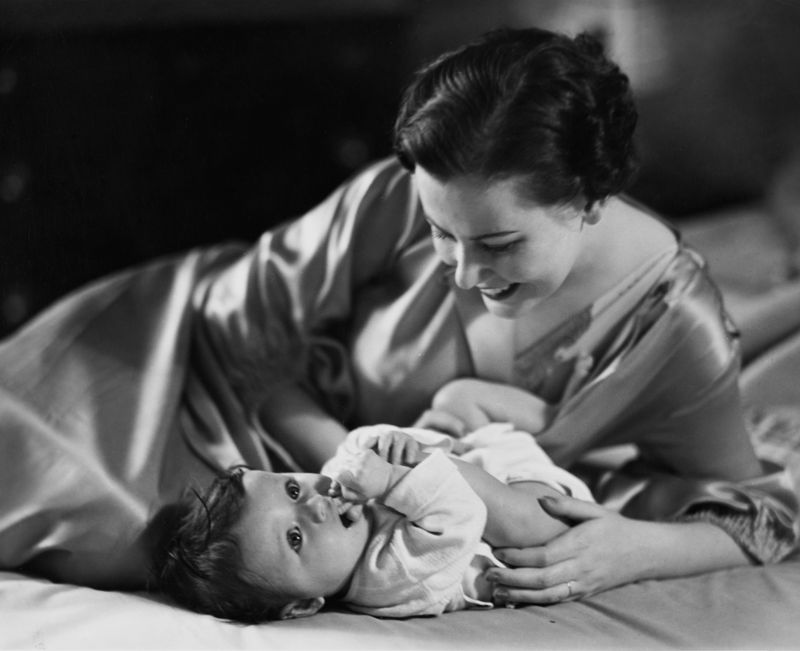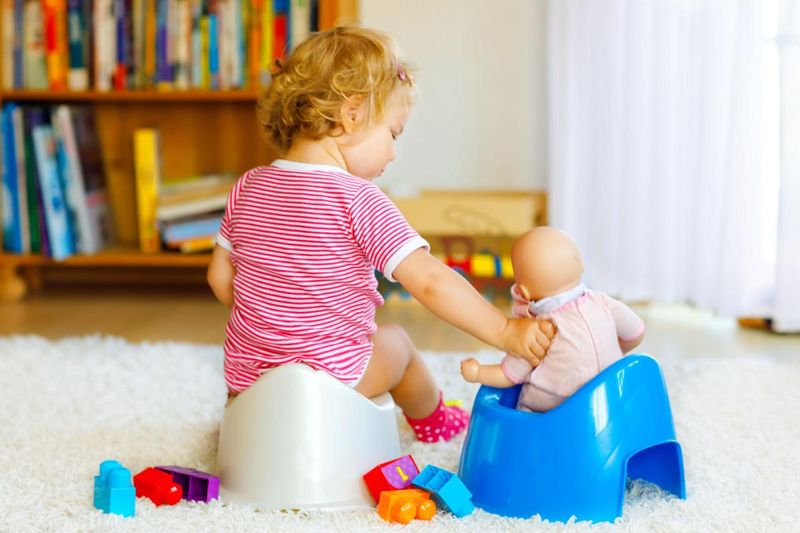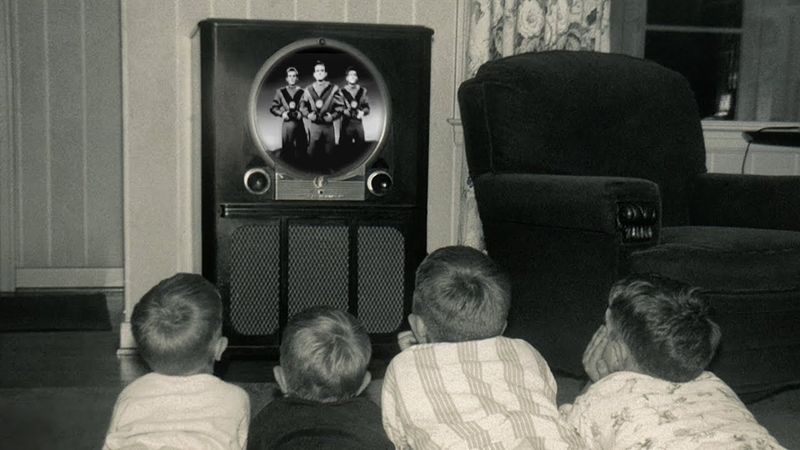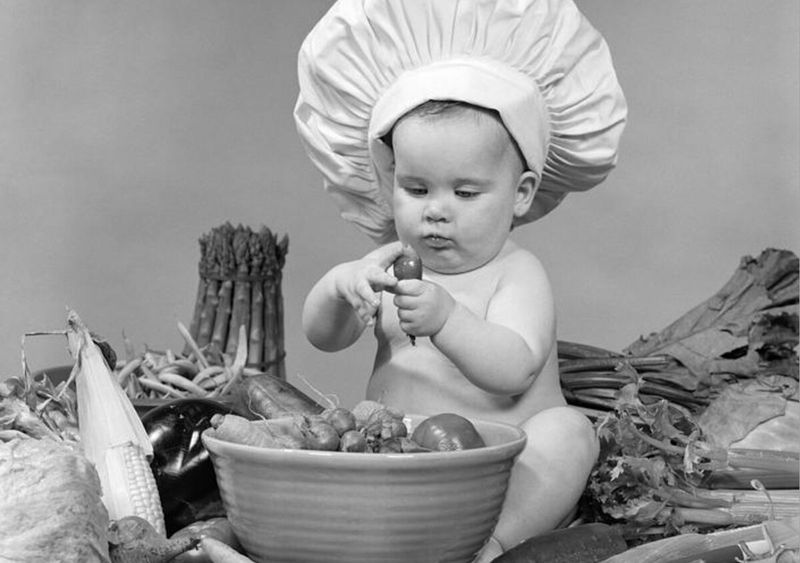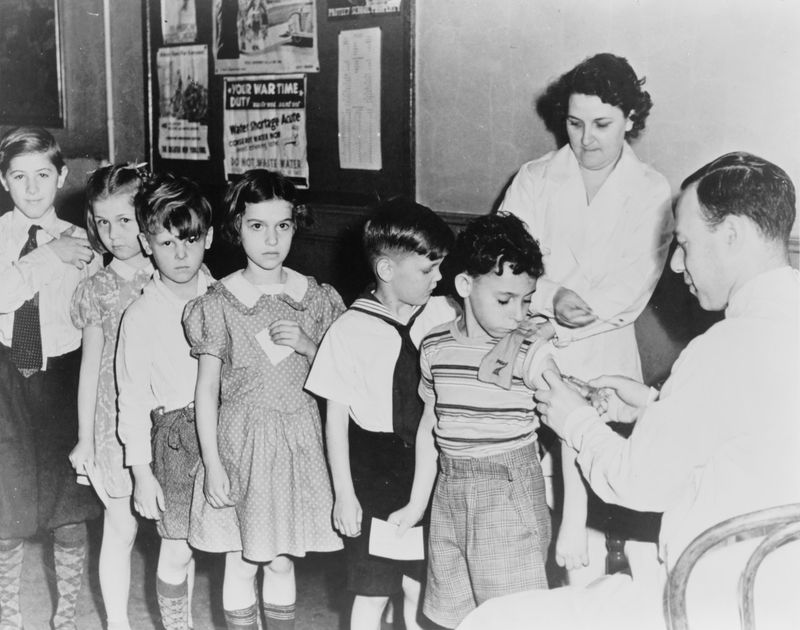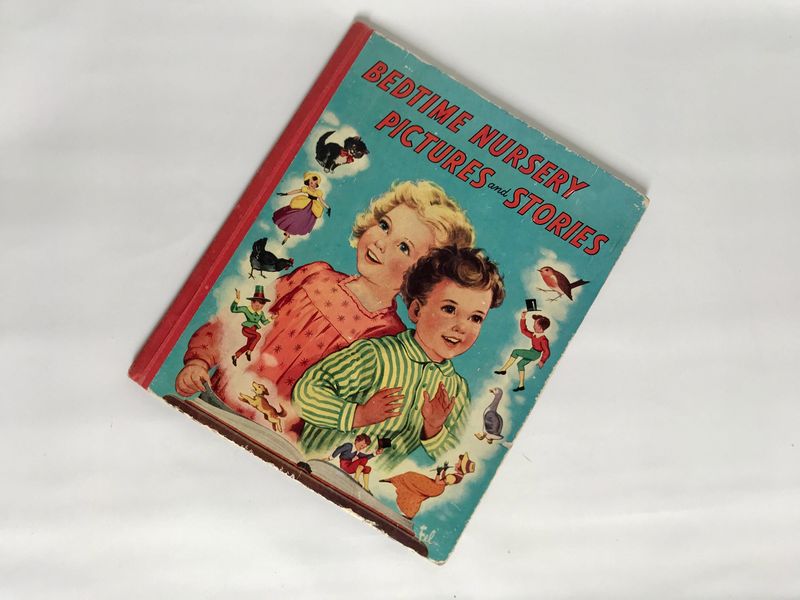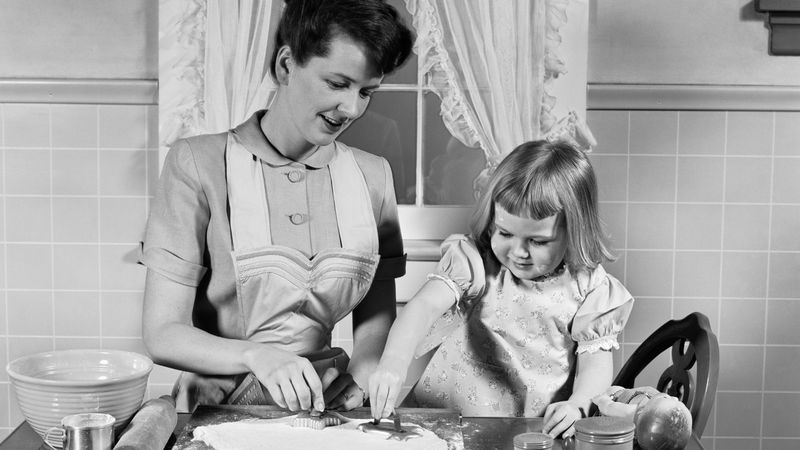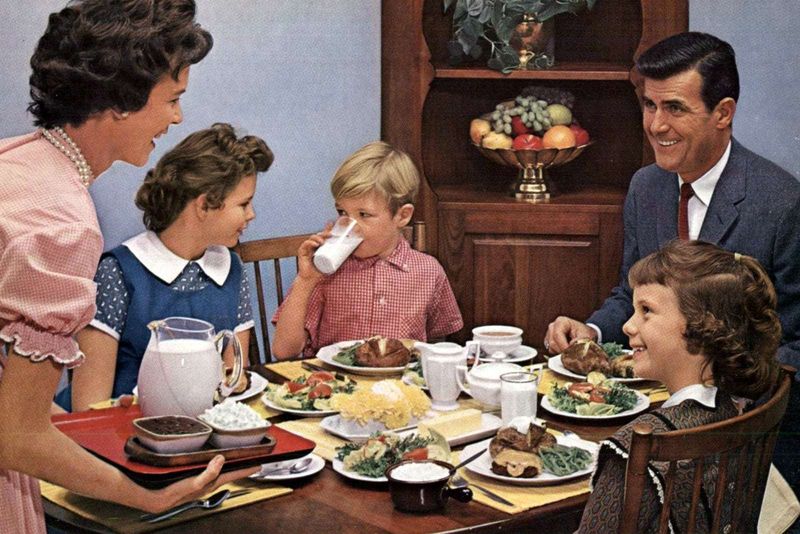Parenting techniques have evolved significantly over the decades, and what was considered normal in the 1950s and 1960s might be seen as shocking or even unacceptable today.
This blog post explores 22 parenting practices from that era, offering a glimpse into a different time and highlighting how much parenting norms have changed.
From unsupervised outdoor play to limited emotional expression, these practices reflect societal values of the past and provide insight into how parenting has transformed to adapt to new research and cultural shifts.
1. Unsupervised Outdoor Play
In the 1950s and 1960s, children often roamed their neighborhoods unsupervised, engaging in outdoor play without immediate parental oversight.
Parents trusted communities to keep children safe, fostering independence early on. However, today’s parents might be shocked by the lack of supervision and perceived safety risks.
Children built forts, rode bikes, and explored natural surroundings, learning to navigate the world on their own. This practice emphasized self-reliance and problem-solving skills, but it also came with risks that modern parents might find unacceptable.
While fostering independence is valuable, today’s parents often seek a balance between freedom and safety.
2. Limited Emotional Expression
Emotional expression was often limited in families during the 1950s and 1960s. Parents encouraged children to suppress feelings and maintain a stoic demeanor, believing it promoted resilience. Today, such an approach might be seen as hindering emotional development.
Conversations about feelings were minimal, with an emphasis on “toughening up” instead. Modern parenting values emotional intelligence and open dialogue, providing children with tools to express emotions constructively.
While resilience is important, contemporary parents understand the need for nurturing emotional health, allowing children to articulate and process emotions in a supportive environment.
3. Disciplining with Corporal Punishment
Corporal punishment was a common form of discipline in the 1950s and 1960s, with spanking being widely accepted. Parents believed it was an effective way to instill obedience and respect. Today, this method is largely viewed as harmful and counterproductive.
Research has linked corporal punishment to negative long-term effects, including aggression and mental health issues. Modern parenting emphasizes positive discipline techniques, focusing on communication and understanding.
While discipline remains essential, today’s parents seek methods that promote healthy development and strong relationships, avoiding physical punishment in favor of more empathetic approaches.
4. Car Safety Negligence
Car safety standards in the 1950s and 1960s were remarkably different from today. Seatbelts were often absent, and children frequently rode unrestrained, sometimes even standing in the backseat. This lack of safety measures would shock modern parents.
The risks associated with unrestrained travel weren’t fully understood, and the emphasis on car safety was minimal. Today, stringent laws and awareness campaigns stress the importance of seatbelts and properly installed car seats.
Understanding these past practices highlights the progress made in automotive safety, reflecting a significant shift toward prioritizing the well-being of all passengers.
5. Strict Gender Roles
Parenting in the 1950s and 1960s was heavily influenced by strict gender roles. Mothers typically stayed at home, focusing on childcare and household tasks, while fathers were the breadwinners. This division would seem outdated to modern parents.
The roles defined not only parental duties but also the upbringing of children, reinforcing traditional gender expectations. Today, parenting is more fluid, with roles shared according to individual family dynamics.
The shift towards equality and shared responsibilities has allowed families to redefine roles, encouraging children to pursue interests and careers beyond traditional gender constraints.
6. Smoking Around Children
In the 1950s and 1960s, smoking was a prevalent social habit, often taking place indoors regardless of children’s presence. Parents smoking around children was commonplace, unaware of the health risks we recognize today.
The dangers of secondhand smoke were not well-publicized, and smoking was even considered sophisticated. Modern parents prioritize smoke-free environments, understanding the serious health implications for children.
This practice stands in stark contrast to today’s awareness of smoking hazards, highlighting the importance of creating safe and healthy spaces for young ones. The past’s social norms have given way to health-conscious parenting.
7. Early Introduction to Alcohol
Introducing children to alcohol at a young age was not unusual in the 1950s and 1960s. Parents often allowed sips of wine or beer, believing it cultivated a relaxed attitude toward drinking. Today, this approach would raise eyebrows.
The belief was that early exposure prevented rebellious behavior later. However, modern understanding of alcohol’s effects on developing brains has led to stricter guidelines.
Parents now focus on educating children about responsible behavior without early exposure. This shift underscores a growing awareness of the potential long-term impacts of alcohol, prioritizing health and well-being over casual introductions.
8. Latchkey Kids
The term “latchkey kids” originated in the 1950s and 1960s, describing children who returned to an empty home after school due to both parents working. This independence would be surprising to many of today’s parents.
Children were expected to manage their own after-school time, fostering self-sufficiency. However, concerns about safety and supervision have led to changes in how after-school care is approached.
Contemporary parents may opt for structured activities or childcare, emphasizing security and engagement. The evolution from latchkey independence to supervised care reflects a broader focus on child welfare and development.
9. Minimal Childproofing
Childproofing was minimal in the 1950s and 1960s, with homes often lacking safety features like cabinet locks or stair gates. This approach would alarm today’s parents, who prioritize creating safe environments for toddlers and young children.
Parents relied on verbal warnings and supervision instead of physical barriers. While this encouraged children to learn boundaries, it also posed risks.
Modern parenting embraces comprehensive childproofing, understanding that accidents can happen quickly. The shift emphasizes prevention and safety, acknowledging that a secure home environment supports a child’s exploration and growth without unnecessary hazards.
10. No Car Seats
The absence of car seats for children in the 1950s and 1960s is a stark contrast to today’s stringent safety standards. Parents often held infants in their laps or allowed older children to sit freely, a practice unthinkable now.
The understanding of vehicle safety for children was limited, with regulations only emerging later. Modern parents recognize the critical importance of car seats, ensuring secure travel for the young.
This evolution highlights the progress in child safety awareness, marking a significant change in how parental responsibilities have adapted to protect children in all aspects of daily life.
11. Limited Supervision in Public
In the 1950s and 1960s, children often played in public spaces with limited parental supervision. This practice, rooted in trust and community, might shock today’s parents who often accompany children closely.
Parents believed in fostering independence and social skills, allowing children to explore without constant oversight. Modern concerns about safety and stranger danger have drastically altered these norms.
Today’s parents often supervise closely, balancing freedom with vigilance. The change reflects shifts in societal values, emphasizing security while still encouraging children to develop independence in a safe, controlled manner.
12. Limited Educational Involvement
Parent involvement in education during the 1950s and 1960s was often limited to report cards and occasional meetings. This hands-off approach contrasts sharply with the active engagement seen in modern parenting.
Parents trusted schools to manage educational needs, expecting children to succeed independently. Today, parental involvement is encouraged, with emphasis on collaboration between home and school.
Modern parents are more likely to participate in school activities, fostering a supportive learning environment. This shift reflects an understanding of the role active parental engagement plays in children’s academic success and overall development.
13. Routine Cold Showers
Cold showers were sometimes used as a disciplinary measure in the 1950s and 1960s, believed to build character and resilience. Today’s parents might find this practice harsh and unnecessary.
The philosophy was that exposure to discomfort would strengthen resolve. However, modern understanding of child psychology highlights the importance of empathy and positive reinforcement.
Contemporary parenting values more nurturing approaches to discipline, focusing on understanding and guidance. The move away from cold showers to more compassionate methods reflects a broader change in how children’s needs and well-being are prioritized.
14. Breastfeeding Discretion
Breastfeeding in public was often discouraged in the 1950s and 1960s, with mothers expected to be discreet or avoid it altogether. This contrasts with today’s more open acceptance of breastfeeding.
Social norms dictated that breastfeeding be a private act, leading to challenges for mothers seeking to nurse publicly. Modern movements advocate for breastfeeding rights, emphasizing its natural and essential role.
The shift towards acceptance and support reflects a broader understanding of maternal needs and children’s health. Encouraging public breastfeeding without stigma aligns with contemporary values of inclusivity and support for parenting choices.
15. Early Potty Training
Potty training often began at an early age in the 1950s and 1960s, with parents eager to transition children out of diapers. Today’s approach is more child-led, recognizing individual readiness differences.
Parents utilized structured methods, sometimes starting as early as 18 months. Modern understanding allows for flexibility, accommodating each child’s unique development pace.
The change underscores a shift from rigid timelines to supportive practices, fostering a stress-free transition. Contemporary parents prioritize comfort and readiness, ensuring that potty training aligns with the child’s needs rather than societal expectations.
16. Limited Screen Time Concerns
Screen time was limited in the 1950s and 1960s mainly due to the availability of technology, with one television per household being common. Concerns about media impact were minimal compared to today.
Television was a shared family activity, with limited programming and set schedules. Modern parents navigate a digital landscape, managing screen time across multiple devices and platforms.
Today’s emphasis on balance and content quality highlights a deeper understanding of media’s role in development. The evolution reflects the challenges and opportunities presented by technological advancements, influencing how families engage with media.
17. Homemade Baby Food
Homemade baby food was the norm in the 1950s and 1960s, with parents preparing meals from scratch due to limited commercial options. This practice aligns with today’s trend towards natural foods, yet modern parents have more choices.
Parents relied on traditional recipes, emphasizing fresh ingredients. While convenience has increased, the focus on nutrition remains consistent.
The resurgence of interest in homemade baby food reflects a desire for wholesome, controlled ingredients. Today’s parents blend tradition with modern convenience, offering nutritious meals that cater to health and lifestyle preferences.
18. Limited Vaccination Awareness
Vaccination awareness in the 1950s and 1960s was limited, with parents often unaware of the full importance and schedule of vaccines. Modern awareness campaigns have significantly altered this landscape.
Trust in medical professionals was high, but detailed understanding was less common. Today, parents are more informed, engaging actively in vaccination decisions.
The shift towards informed consent and awareness reflects advancements in medical communication and public health education. Modern parents prioritize proactive healthcare, ensuring that they are well-informed about vaccination benefits and schedules for their children’s well-being.
19. Homemade Remedies for Illness
In the 1950s and 1960s, homemade remedies for common illnesses were widely used, with parents relying on traditional solutions. This practice may surprise modern parents who often turn to medical professionals.
Cold and flu symptoms were treated with herbal teas and poultices. Today, while some remedies persist, there’s a greater reliance on pharmaceutical solutions and professional advice.
The blend of tradition and modern medicine reflects a balanced approach to health. Parents today have a broader spectrum of options, integrating natural and medical treatments to support family health creatively and effectively.
20. Bedtime Stories as a Routine
Bedtime stories were a cherished routine in the 1950s and 1960s, fostering imagination and language skills. This practice continues today, bridging generations with shared narratives.
Parents dedicated time to storytelling, creating a comforting bedtime ritual. Modern parents embrace this tradition, understanding its benefits for bonding and development.
The continuity of bedtime stories reflects the timeless value of storytelling in child development. This practice supports emotional connections and literacy, making it a lasting element of parenting that spans cultural and technological changes.
21. Seasonal Chores for Kids
Seasonal chores were common for children in the 1950s and 1960s, teaching responsibility and work ethic through tasks like raking leaves or shoveling snow. Modern parents may still practice this, but with different emphases.
Chores were seen as essential lessons in diligence and community contribution. Today, the focus shifts towards balancing chores with academic and extracurricular commitments.
The evolution of chores reflects changes in family dynamics and priorities. Parents now integrate responsibilities with flexibility, ensuring children learn valuable skills while maintaining a healthy balance of work and play.
22. Limited Dietary Restrictions
Dietary restrictions were minimal in the 1950s and 1960s, with families enjoying a wide range of foods without modern dietary concerns. This lack of restrictions might surprise today’s health-conscious parents.
Meals were hearty and unregulated, focusing on traditional recipes. Today’s parents often navigate allergies, nutritional needs, and lifestyle choices.
The shift in dietary awareness mirrors broader health and wellness trends. Modern parents balance tradition with contemporary nutritional insights, ensuring meals meet diverse needs while honoring family culinary heritage.
